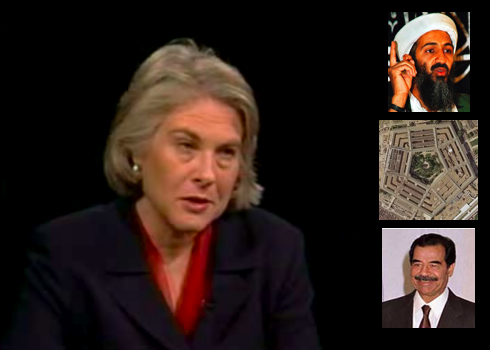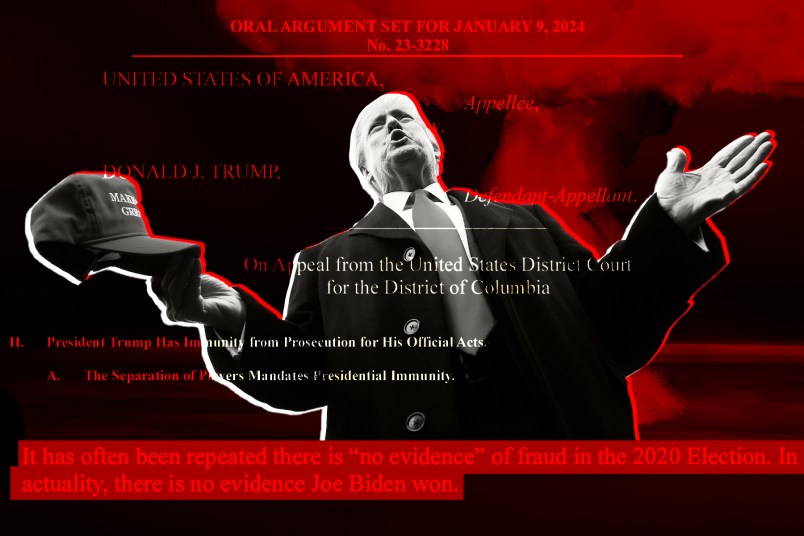When the Pentagon’s internal think tank decided in 2004 it needed a better understanding of Al Qaeda, it turned to an unlikely source: the terrorism analyst Laurie Mylroie, who was known as the chief purveyor of the discredited idea that Saddam Hussein was behind Sept. 11 and many other attacks carried out by Al Qaeda.
Mylroie was paid roughly $75,000 to produce a 300-page study, “The History of Al Qaida,” for the Defense Department think tank, known as the Office of Net Assessment, a DOD spokesman tells us. The study, which is dated September 2005, was posted on an intelligence blog last month.
It documents the development of Al Qaeda and spends many pages dancing around the theory that has defined Mylroie’s career — that key Qaeda leaders acted at the behest of the Iraqi regime. She also argues that group-think among U.S. analysts has obscured the true nature of the terrorist group.
Those who know Mylroie’s work are shocked that the Pentagon would hire her.
“I think that she has zero credibility on these issues,” says terrorism expert Peter Bergen, who dubbed Mylroie “a crackpot” in a 2003 Washington Monthly profile.
Once an assistant professor at Harvard, Mylroie made her name as a Middle East expert in the 1980s. But after the 1993 WTC attack, she became convinced that evidence ignored by virtually everyone else proved Saddam was sponsoring Al Qaeda. She expanded on that theory after the 1995 Oklahoma City bombing (which she linked to Iraq) and September 11 (ditto), culminating in the book Study of Revenge: The First World Trade Center Attack and Saddam Hussein’s War against America, published by the American Enterprise Institute in October 2001.
Mylroie’s allies in the Bush Administration included Iraq hawks Paul Wolfowitz, Richard Perle, and others. “The elaborate conspiracy theories she had propounded–dismissed as bizarre and implausible by the U.S. law enforcement and intelligence communities–would have enormous influence within the administration,” reported David Corn and Michael Isikoff in their book Hubris.
In the 2005 Pentagon study, Mylroie floats the idea that 9/11 mastermind Khalid Sheik Mohamad and Ramzi Yousef, who planned the 1993 World Trade Center bombing, “are the trained agents of a terrorist state, the expertise and other resources of which enabled the militants to conduct attacks they were incapable of carrying out on their own.” She also suggests that that state is Iraq.
The study was not a one-shot deal for Mylroie. TPMmuckraker previously reported that Mylroie produced reports on Saddam Hussein for the same DOD office as late as 2007.
Exactly who within the Pentagon decided Mylroie was the woman for the job is unclear. But the Pentagon work came at a time when her reputation had waned considerably, and her public writings were becoming less and less frequent.
Said DOD spokesman Eric Butterbaugh:
“The study was commissioned in part because of Ms. Mylroie’s access to and library of documents she had that were relevant to the history of Al Qaeda. More broadly, the study was commissioned because we believed it would be useful to have a better understanding of Al Qaeda as an organization, the circumstances under which it had formed, how it had evolved over time, and the activities and attacks it had perpetrated.”
Mylroie did not respond to a request for comment.
For a taste of the study, which we’ve posted in full, here’s a passage in which Mylroie outlines what she calls Khalid Sheik Mohamed’s ethnic links to Iraq. She describes these links his primary motivation for terrorism (emphasis ours):
The ethnicity of KSM’s clan is significant. These men are Baluch, a Sunni Muslim people, with their own language and their own compact territory, which lies in eastern Iran and western Pakistan. Like the much better-known Kurds, the Baluch aspired to a state of their own in the twentieth century, but failed to achieve one. The United States has very little to do with the Baluch; most Americans are unfamiliar with so much as the name. The Baluch have no evident motive for these murderous terrorist attacks, save one: the former Iraqi regime of Saddam Hussein had deep and extensive ties with the Baluch on both sides of the Iranian-Pakistani border. Going back to the 1970s, Iraq used the Baluch against the Shi’a government in Tehran, with which Baghdad was long at odds, and Baghdad employed the Baluch extensively during the Iran-Iraq war (1980-1988).
Notably, these Baluch–KSM and his extended family–do not appear to be particularly religious.










